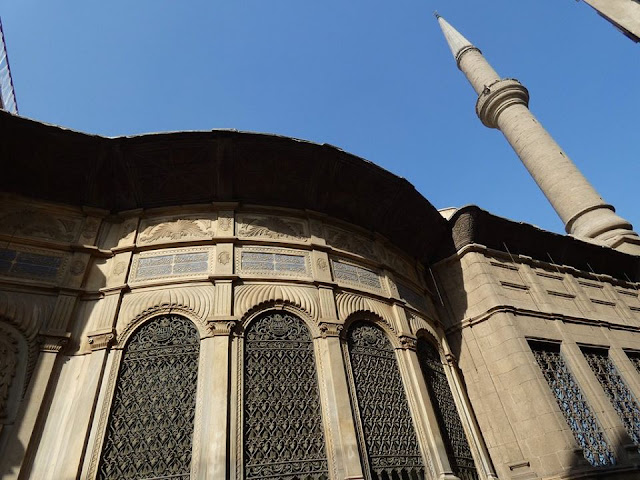It was created in 1839 AD, starting at the beginning of the Bergoan Lane on Al-Moez Street
It was built by Prince Suleiman Agha Al-Calendar, one of the princes of Muhammad Ali Pasha
The mosque is divided into three corridors, facing and its main entrance on the western side overlooking Al-Moez Street, as is the case for both the avenue and the writers attached to it .. This is this interface the detailed record of it where the mosque data was recorded.
جد The mosque consists of a rectangle that is divided into two squares, and the western square includes the courtyard of the mosque, and the courtyard is surrounded by porticoes on its four sides and covered by small domes based on marble columns, and the courtyard is covered with a wooden ceiling in the middle of which opened an opening for ventilation and lighting
الشرق The eastern square in the area of the place of prayer, and consists of two plaques, each of which includes two marble pillars on which round arches are based. The qibla wall is surrounded by a marble mihrab.
Vixen facade, Sabeel white marble, with decorations and inscriptions, and for its windows are cast bronze windows with cut-out motifs.
أسط The cylindrical minaret, which resembles at the top of the pencil and wooden domes that are decorated with Ottoman inscriptions... The door was decorated with marble and also to decorate the civil contract with many plant inscriptions and inscriptions
One of the princes of Muhammad Ali Pasha. He rose to jobs until he reached the position of "Calendar", that is, the Emir of the Arms Brigade. It was known that he was unfairly unfair in expropriating the properties on which he built his installations, and he also seized many elements of the ruined mosques in the desert in those facilities. It has many buildings built by it, including an agency next to Khanqah Baybars Al Hashinkir in Al Jamaliah, and an agency in Khan Hebron and the renovation of the Red Mosque
































